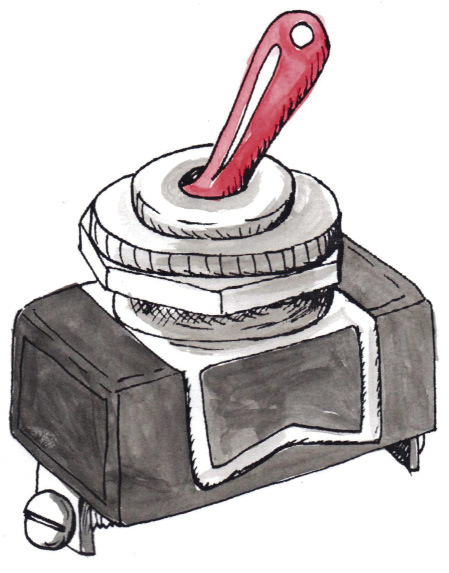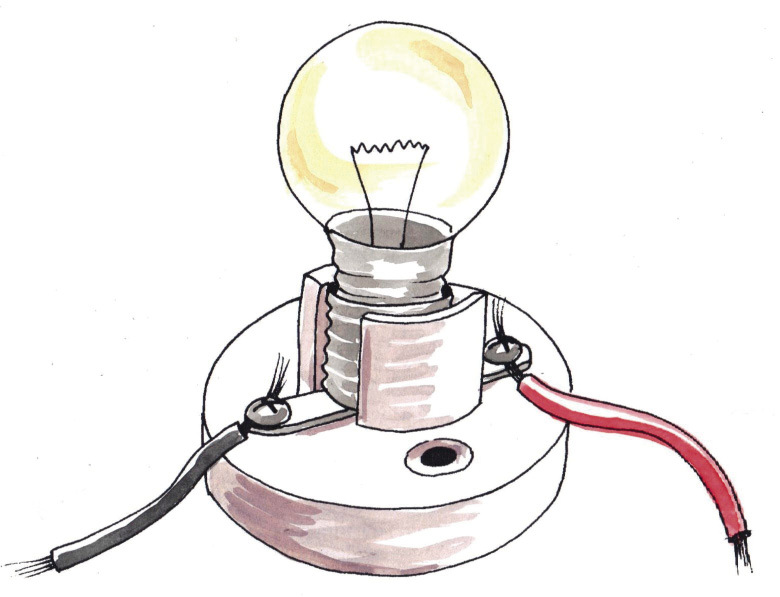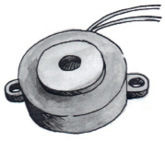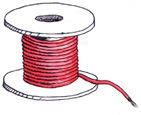Simple electric circuits
In this chapter, you will learn what an electric circuit is and how to connect all the parts of an electric circuit. You will learn how to draw circuit diagrams. You will also learn how electromagnets work and how to make a simple electromagnet.
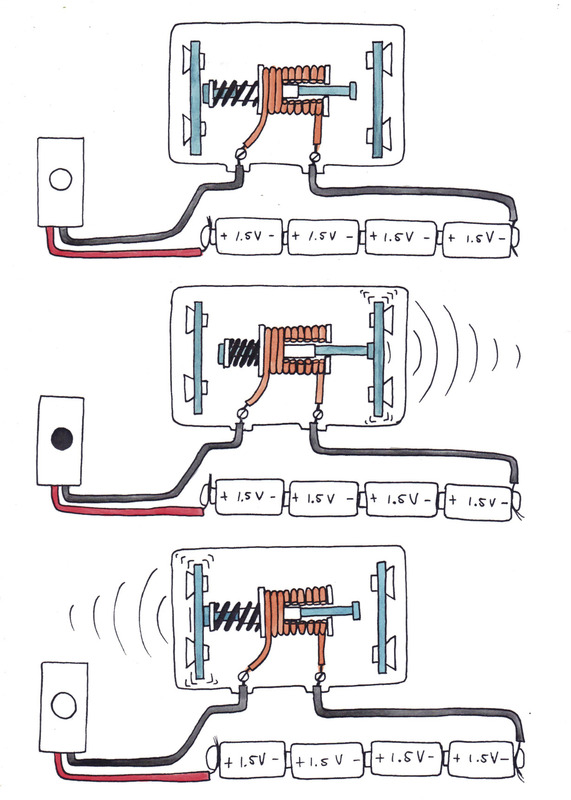
Figure 1: A bulb can form part of an electric circuit. The filament in the bulb forms part of the circuit.
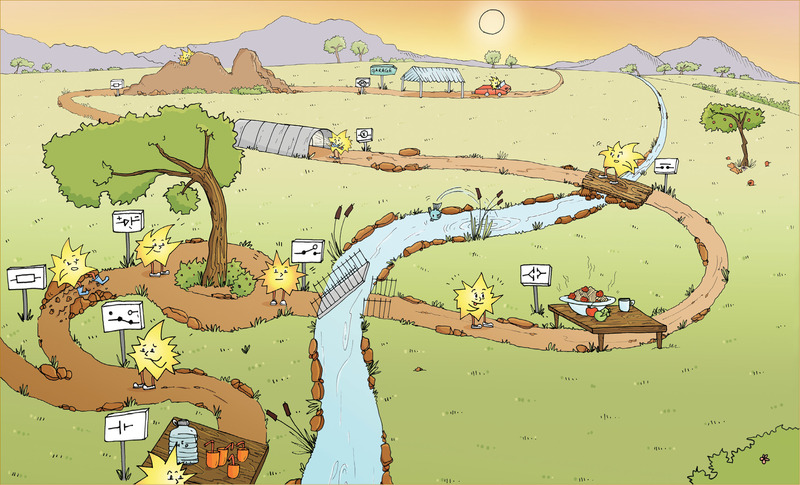
Figure 2
Circuits and components
An electric circuit needs three basic things to work:
1. An energy source. This can be a cell or a stronger power source.
2. A complete circuit. There has to be an unbroken pathway of conducting materials through which the electrical current can flow.
3. A load. There has to be some form of resistance in the circuit. This could be in the form of a light bulb, a resistor, a motor or other electrical components.
To show how an electric circuit should be connected, we draw circuit diagrams with symbols that show each component. This is a simple way to represent the electric circuit. This table shows the symbol we use for each component:
A component is one part of a whole system.
|
Name |
Picture |
Symbol |
|
electrochemical cell or cell |
|
|
|
batteries in series, which means they are next to each other |
|
|
|
switch |
|
|
|
light bulb |
|
|
|
resistor |
|
|
|
buzzer |
|
|
|
conducting wires |
|
|
The following is an example of a simple electric circuit. This circuit consists of a cell, a switch, and a light bulb that have been connected by insulated copper conducting wires.
Circuit diagrams are shown as rectangular boxes, even though the real circuit looks quite different.
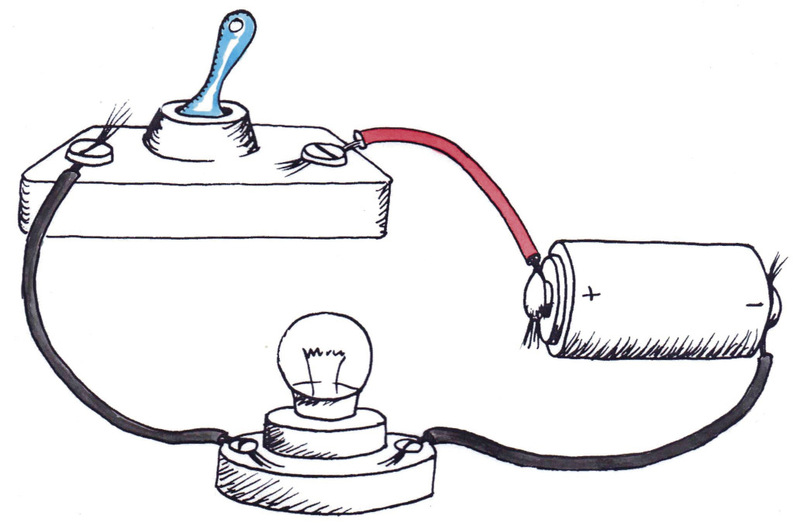
Figure 3
Questions to answer
1. What are the three things that you need to make an electric circuit?
2. How do you think you can see if the circuit in the picture at the top of this page is working?
3. If you made a mistake while putting the circuit together and the connections were not complete, what do you think would happen?
Building your own electrical circuit
Build simple circuits
For this practical exercise, you will need the following objects:
- several 1,5 V cells or one 9 V cell,
- insulated copper wires,
- a switch, and
- a light bulb.
1. Divide into groups of three or four.
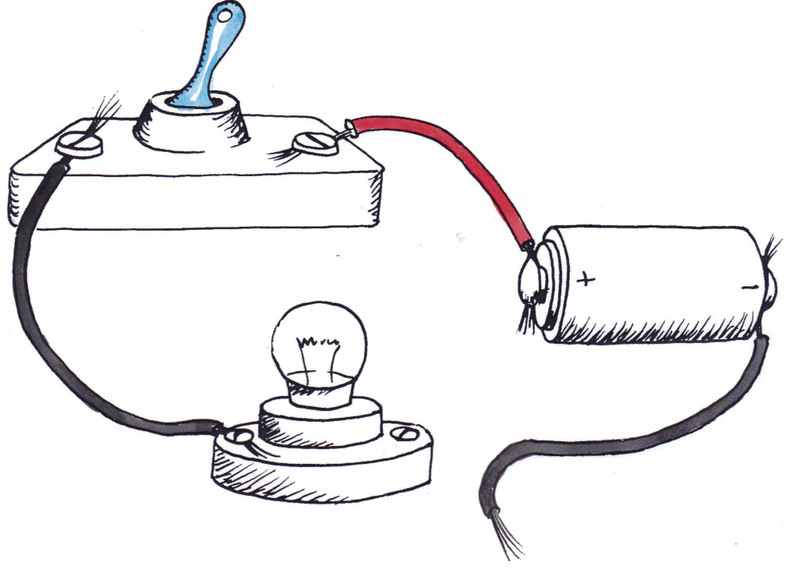
Figure 4
2. Connect the components as shownin the diagram in Figure 4.
(a) Does the light bulb light up?
(b) Why does the light bulb not light up?
3. Now try this circuit:
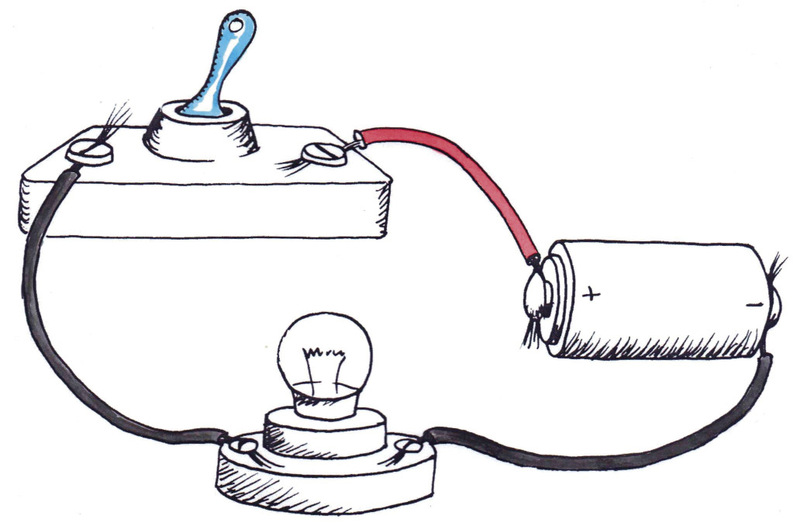
Figure 5
(a) Does the light bulb light up?
(b) Why does the light bulb light up?
4. Draw a circuit diagram to show how you connected the components in your circuit. Remember to use a ruler.

5. Which of the components in your circuit is the energy source?
6. Which of the components in your circuit is the load?
Electromagnets
Now we are going to look at a very interesting phenomenon, which is the relationship between electricity and magnetism.
Electromagnets are magnets that are created using electricity. They are not permanent magnets. They are only magnets when electricity flows through them. When the electricity is switched off, they lose their magnetism.
Electromagnets are very useful for separating scrap material. Scrap material in waste dumps is usually a mixture of metals and non-metals. The ferrous metals, which are those that contain iron, are still valuable. It takes a lot of time to sort waste material by hand.
As you learnt last week, ferrous metals are attracted to magnets. An electromagnet is passed through the waste material and all the ferrous metals stick to it. The electromagnet is then moved over a collection bin. When the electromagnet is switched off, the ferrous metals are no longer attracted to it and they fall into the bin.
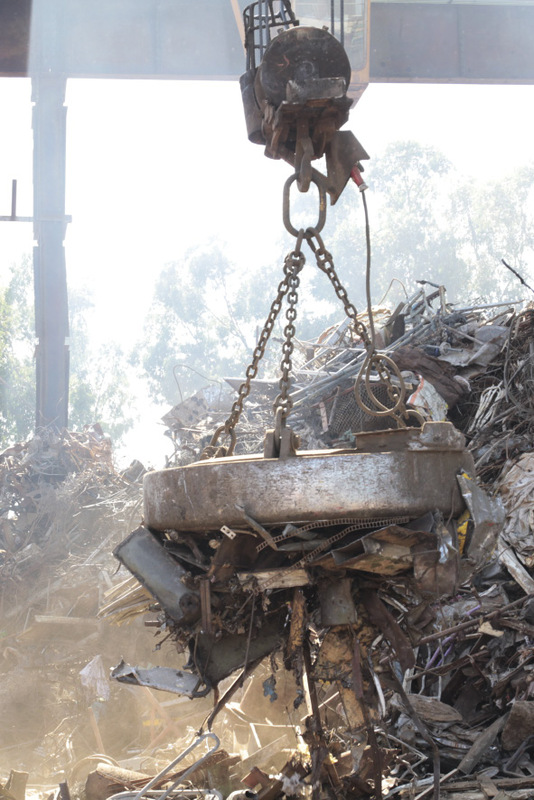
Figure 6: An electromagnet is used to sort metal in a scrap metal yard.
Apart from being useful to sort scrap metal, electromagnets are often used as components in other electrical devices. Some examples include:
- in motors: to rotate the motor.
- in loudspeakers: an electromagnet responds to the sound signals and amplifies them.
- in computer hard drives: electromagnetism is used to write and store data.
- in electric bells: electromagnets attract and release the hammer of the bell.
- in a magnetic door switch: electromagnets are useful to close and open doors.
In all of these applications, the fact that the magnetic force can be controlled by switching the electric circuit on and off is the property that makes the electromagnet so useful.
Now let us look at a simple electromagnet in the classroom. Your teacher can do this experiment as a demonstration.
Make a simple electromagnet
For this activity, you will need the following objects:
- a long iron nail, about 15 cm long. If you don't have a long nail, you can make a bundle of several pieces of iron wire,
- 3 m of insulated copper wire,
- a D-cell cell,
- wire stripper, and
- metal paperclips.
1. Use the wire stripper to strip a small piece of the insulation from both ends of the insulated copper wire.
2. Neatly wrap the iron nail with the insulated wire. Make sure that you keep the wire turning in the same direction. Keep the coils close together.
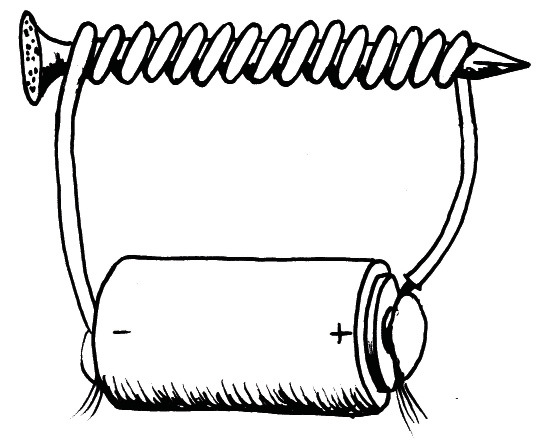
Figure 7: A simple electromagnet
3. Now wrap one of the stripped ends of the wire around the positive terminal of your cell.
4. Wrap the other stripped end around the negative terminal of your cell.
5. To test if your electromagnet is working, see whether it can pick up paperclips. If the paperclips are attracted to the iron rod, then your electromagnet is working!
Safety note:
The iron nail can become quite hot, so be careful not to burn your hands!
6. Once you have tested your electromagnet, disconnect the wire from one terminal of the cell. Now try to pick up the paperclips. Are the paperclips attracted to the iron rod?
7. How can you use the electromagnet to pick up paperclips from one place and then put them in a different place?
How does an electromagnet work?
There is a strong relationship between electricity and magnetism. The electricity in the wire coils creates a magnetic field. The iron nail is right in the middle of this magnetic field. Because the iron nail is a ferromagnetic material, it becomes magnetised by the field. The magnetic field from the electric current is made much larger, or amplified, by the magnetic field in the iron nail. Without the iron core, the magnetic field would be very weak. When the electric current is switched off, the iron nail loses its magnetism.
Next week
Next week you will revise mechanical systems and frame structures in preparation for this term's mini-PAT.




